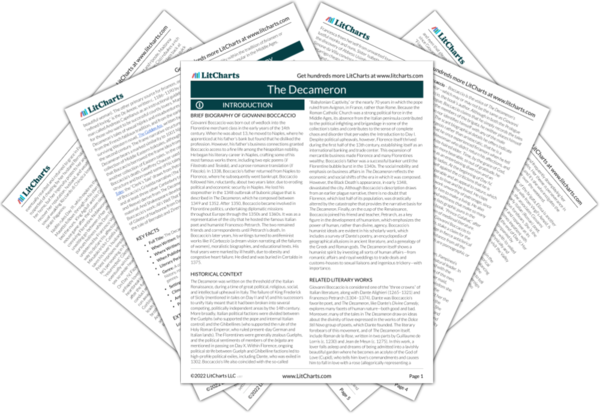In contrast to his bad reputation, Ghino has treated the Abbot with kindness, generosity, and Christian charity. He thus proves that a person’s inherent character is more important in determining their worth than external appearances and titles, whether they are “nobleman” or “highwayman.” Nevertheless, this tale betrays its deep investment in traditional ideas about class when it allows Ghino to justify his crimes because they are the only way he can live the life appropriate to a man of his rank. Here, he clearly means his social status, rather than the merit he deserves because of his character. But by invoking fortune for his state, the tale absolves both the highwayman and the church hierarchy of any responsibility for the situation. The Abbot’s act of extreme generosity, leaving behind all the extra luxuries he brought with him, is meant to be the tale’s supreme example of munificence. But the tale obliquely uses even this to criticize the clergy, since entertaining the Abbot and his retinue during their stay required a larger commitment of goods from Ghino. The Abbot also orchestrates the rehabilitation of Ghino’s reputation (at no cost to himself, given his stature in the Roman Catholic Church hierarchy). And—given that he cured the Abbot’s illness—it’s appropriate that he become a Knight Hospitaller. This was a Christian military order founded initially to care for and protect sick pilgrims in the Holy Land.
